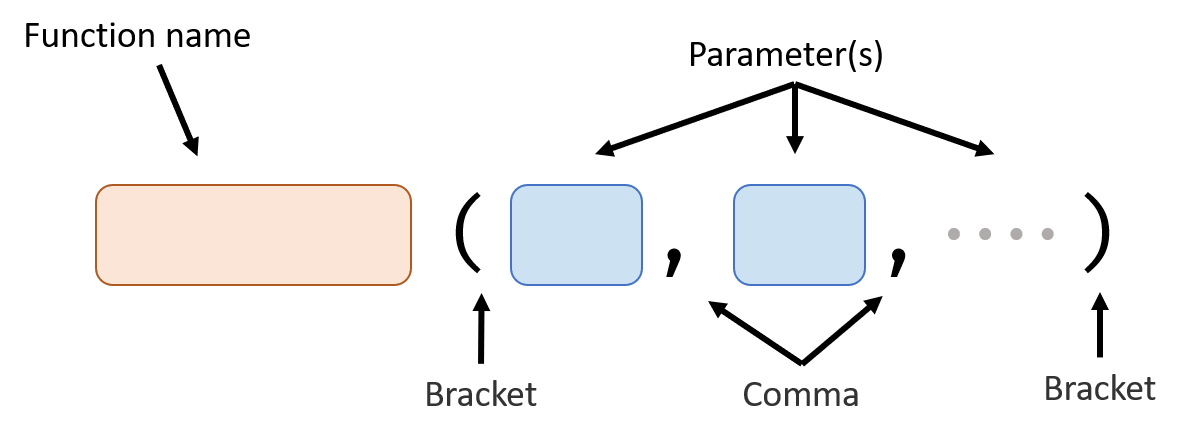Basic Function¶
A function performs a per-defined task when you use it (also known as “when you call it”).
Now, we can only use functions that are pre-defined by python. In the Advanced Function handout, we will learn how to define a function by ourselves.
Here’s the full process of using a function:

Basic Structure¶

Parameter(s)¶
This is the place where you give data to the function.
You can don’t give a function any parameter, one parameter or multiple parameters. Parameters are separated by commas.
For example: (The following code is just for demonstrate how to give data to a function, it can’t actually run because those functions are not defined yet.)
Return Value¶
This is how you get new data from the function.
A function can return no value or one value. You can assign the value returned from a function to a variable.
For example: (The following code is just for demonstrate how to get value returned from a function, it can’t actually run because those functions are not defined yet.)
How to Describe a Function¶
Knowing how to describe a function is very important when you are trying to figure out how to use a function.
-
Signature
Signature of the function is the function name and the parameter it takes. For example, the signature of the
printfunction isprint (data) -
Parameters
Explain what does each parameter means. For example,
dataparameter means the dataprintfunction will show in the shell. -
Return value
Describe what and how many value the function will return. For
printfunction, it returns no value.
print Function¶
-
Usage: output a value
-
Signature:
print (data) -
Parameters:
Name Value Type Meaning data any type The data will show in the shell -
Return value: None
str Function¶
-
Usage: convert a number type value to string type value
-
Signature:
str (number) -
Parameters:
Name Value Type Meaning number Number The number you want to convert to string -
Return value: same number, but is in string type.
Created: March 24, 2021